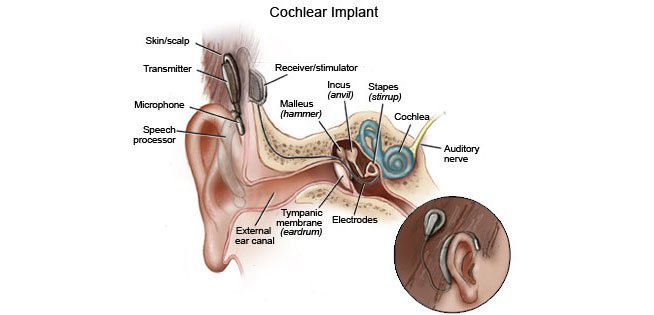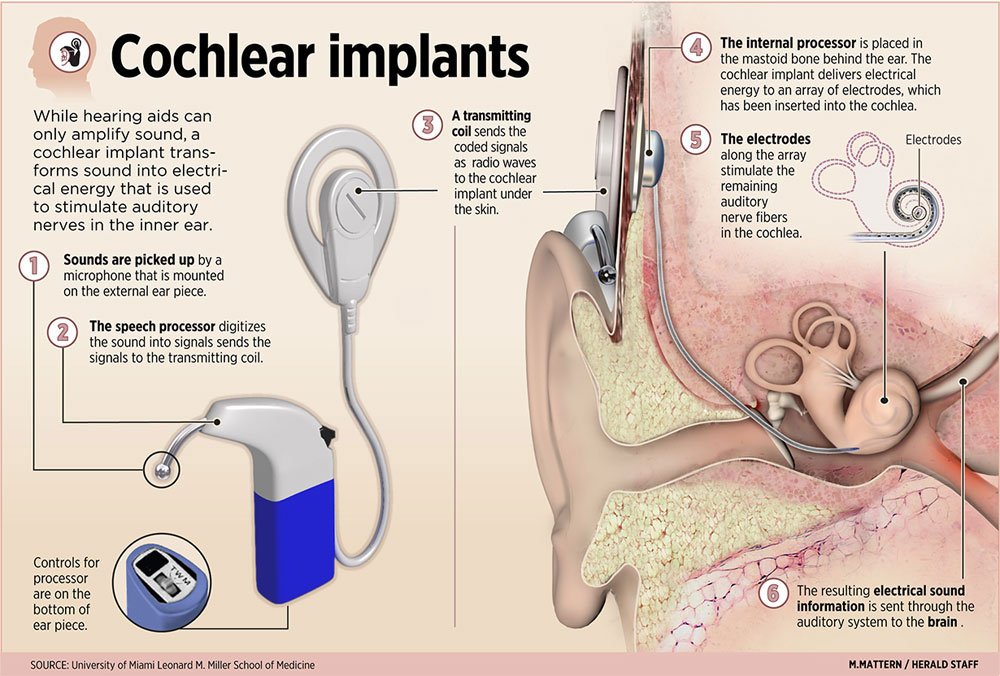
Cochlear implants are a solution for children and adults with severe to profound sensorineural hearing loss. Deaf individuals may also find benefits from a cochlear implant. Most people find success with just wearing hearing aids, but there are some with severe to profound sensorineural hearing loss that do not benefit enough from them. For these specific individuals cochlear implants may be the best option since their sensory cells in the inner ear are severely damaged.
Cochlear implants work differently from hearing aids. Cochlear implants stimulate the auditory nerve directly, bypassing the middle ear and a portion of the inner ear, providing the sense of sound to the wearer. Whereas hearing aids amplify sound by sending the sound through the middle ear and inner ear straight to the cochlea, which is the hearing mechanism. Cochlear implants are not a cure for hearing loss. They help people who are severely hard of hearing or deaf individuals with the ability to perceive the sensation of sound.
What is a Cochlear Implant?
Cochlear implants use two components: an internal part that is surgically implanted and an external part that hooks behind the ear. These two components are connected by a powerful magnet.
External Component
The external component of a cochlear implant consists of a microphone, a speech processor, and a transmitter. The microphone and speech processor are in a small unit that looks like a behind the ear hearing aid that sits on the wearer’s ear. A small wire connects the behind the earpiece to the transmitter, which couples to the magnet. The microphone picks up acoustic sound and sends it to the speech processor. The speech processor digitizes the sound and sends it to the transmitter. The transmitter codes the sounds received and sends it to the internal component through the magnet.
Internal Component
The internal component of a cochlear implant consists of a receiver and electrode arrays. The receiver is surgically placed under the skin on the temporal bone. The electrode arrays are surgically placed deeply into the cochlea which is located in the inner ear. The receiver accepts the signals sent from the transmitter via the magnet and converts them to electrical impulses. The electrode arrays collect the electrical impulses. The arrays send the information directly to the auditory nerve through the surgical portion of the cochlea and the brain. The stimulation of the auditory nerve receives this information as sound.
In my next blog I will talk about cochlear implant candidacy. If you suspect you may benefit from a cochlear implant please contact our office at (616)-994-2770 for a consultation.

